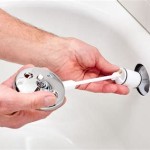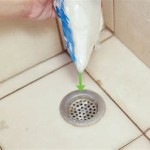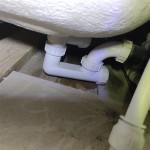How to Make a Portable Bathtub
The desire for relaxation and comfort, often associated with a long soak in a bathtub, isn't necessarily confined to traditional bathrooms. A portable bathtub provides the flexibility to enjoy this experience in various locations, whether it's a small apartment without a built-in tub, a campsite in nature, or simply a preferred room with a different ambiance. Constructing a portable bathtub requires careful planning, material selection, and adherence to safety considerations.
A portable bathtub offers several advantages. It enables bathing in spaces lacking permanent fixtures. It can be easily stored when not in use, saving valuable room. The versatility extends to outdoor use, allowing for bathing under the stars or in scenic environments. Furthermore, a portable tub can be particularly beneficial for individuals with mobility issues, as it can be positioned and adapted to their specific needs.
Key Considerations Before Construction
Prior to commencing the construction process, several key factors deserve thorough consideration. These factors will influence the design, materials, and practicality of the final product. Neglecting these preliminary steps can result in a tub that is unsuitable for its intended purpose or even unsafe to use.
Firstly, the intended user and their physical capabilities should be assessed. The size and depth of the tub must accommodate the user comfortably and safely. For elderly individuals or those with limited mobility, a shallower tub with a lower entry point is essential. Conversely, for taller individuals, a longer and deeper tub may be required to provide adequate immersion.
Secondly, the intended location or locations for using the portable bathtub should be identified. This will determine the required material strength and weather resistance. If the tub is intended for outdoor use, it must be constructed from waterproof and UV-resistant materials. The terrain should also be considered, as uneven surfaces may require a sturdier base or adjustable legs.
Thirdly, the water source and drainage system must be planned in advance. A readily available water source, such as a hose connection or a large container, is necessary for filling the tub. A reliable drainage system is crucial to prevent water damage and ensure easy emptying. This may involve a drainage pump, a gravity-fed drain, or a combination of both.
Fourthly, the method of heating the water needs to be considered. Options include using pre-heated water, a portable water heater, or a solar water heater. The choice will depend on the availability of resources and the desired water temperature. Safety precautions should be taken when using any type of heating device, especially in enclosed spaces.
Finally, the budget for materials and construction must be established. This will influence the choice of materials and the complexity of the design. It is important to prioritize quality and safety over cost, as a poorly constructed tub can pose a risk of injury or water damage.
Materials and Tools Required
The selection of appropriate materials and tools is paramount to the successful creation of a durable and functional portable bathtub. The materials must be waterproof, sturdy enough to withstand the weight of the water and the user, and safe for prolonged contact with skin. The tools should be appropriate for working with the selected materials and ensuring precise construction.
For the tub's shell, options include heavy-duty canvas, reinforced PVC, or a rigid plastic container. Heavy-duty canvas is lightweight and foldable, making it ideal for portability, but it requires a waterproof liner. Reinforced PVC is durable and waterproof, but it can be heavier and less flexible. A rigid plastic container offers excellent structural integrity, but it may be bulky and difficult to transport.
For the frame, options include PVC pipes, metal tubing, or wooden supports. PVC pipes are lightweight and easy to assemble, but they may not be strong enough for larger tubs. Metal tubing provides excellent strength and stability, but it can be more expensive and require specialized tools for cutting and welding. Wooden supports offer a natural aesthetic and can be easily customized, but they require waterproofing and protection from rot.
Waterproof liners are essential for preventing leaks and protecting the tub's shell. Options include PVC liners, rubber liners, or polyethylene liners. PVC liners are inexpensive and durable, but they may contain harmful chemicals. Rubber liners are more flexible and environmentally friendly, but they can be more expensive. Polyethylene liners are lightweight and food-grade, but they may be less durable.
For drainage, a drain valve, a hose, and a pump (optional) are required. The drain valve should be compatible with the tub's material and easy to operate. The hose should be long enough to reach the drainage point. A pump can be used to expedite drainage, especially in areas with limited gravity flow.
Essential tools include a measuring tape, a cutting tool (such as a utility knife or a saw), a drill, a screwdriver, waterproof sealant, and safety glasses.
Construction Process: A Step-by-Step Guide
The construction process varies depending on the chosen design and materials. However, a general step-by-step guide can provide a framework for building a portable bathtub. This guide assumes the use of a PVC pipe frame and a reinforced PVC liner, as these are commonly used materials for DIY portable tubs.
Step 1: Design and measurements. Draw a detailed sketch of the desired bathtub, including dimensions, frame structure, and drainage placement. Accurately measure all components and create a cutting list for the PVC pipes.
Step 2: Frame construction. Cut the PVC pipes according to the cutting list. Assemble the frame using PVC connectors, ensuring a secure and stable structure. Use PVC cement to permanently join the pipes and connectors.
Step 3: Liner Installation. Carefully position the reinforced PVC liner inside the frame. Ensure that the liner is properly aligned and covers the entire interior surface of the frame. Secure the liner to the frame using clamps or waterproof adhesive.
Step 4: Drainage Installation. Cut a hole in the liner at the designated drainage point. Install the drain valve, ensuring a watertight seal. Attach the drain hose to the valve.
Step 5: Reinforcement (Optional). For added stability, reinforce the frame with additional PVC pipes or metal supports. This is particularly important for larger tubs or those intended for heavy use.
Step 6: Testing and Sealing. Fill the tub with water and check for leaks. Apply waterproof sealant to any areas where leaks are detected. Allow the sealant to cure completely before using the tub.
Step 7: Finishing Touches. Add any desired finishing touches, such as a padded seat, a backrest, or handles. These features can enhance comfort and safety.
This framework can be adapted to suit different designs and materials. The key is to prioritize safety, durability, and watertight construction throughout the process. Regardless of the chosen method, thorough testing and meticulous attention to detail are crucial for creating a portable bathtub that provides a safe and enjoyable bathing experience.

9 Diy Bath Ideas Portable Bathtub S Small

I Bought A Portable Bathtub From

How To Diy A Portable Bathtub Step By Guide

Diy Hot Tub Built In 1 Hour

Top 6 Portable Bathtubs In 2025 Picks

Compact Comfort And Home With Foldable Portable Bathtub

Portable Foldable Bathtub Separate Family Bathroom Spa Tub Soaking Standing Bath For Shower Stall Efficient Maintenance Of Temperature Ideal

Portable Foldable Bathtub Separate Family Bathroom Spa Tub Soaking Standing Bath For Shower Stall Efficient Maintenance Of Temperature Ideal

Portable Foldable Bathtub Separate Family Bathroom Spa Tub Soaking Standing Bath For Shower Stall Efficient Maintenance Of Temperature Ideal

6 Layer Pvc Japanese Freeinstalling Flexible Plastic Bathtub Soaking Portable Bath Tub For S Shower Stall
Related Posts








